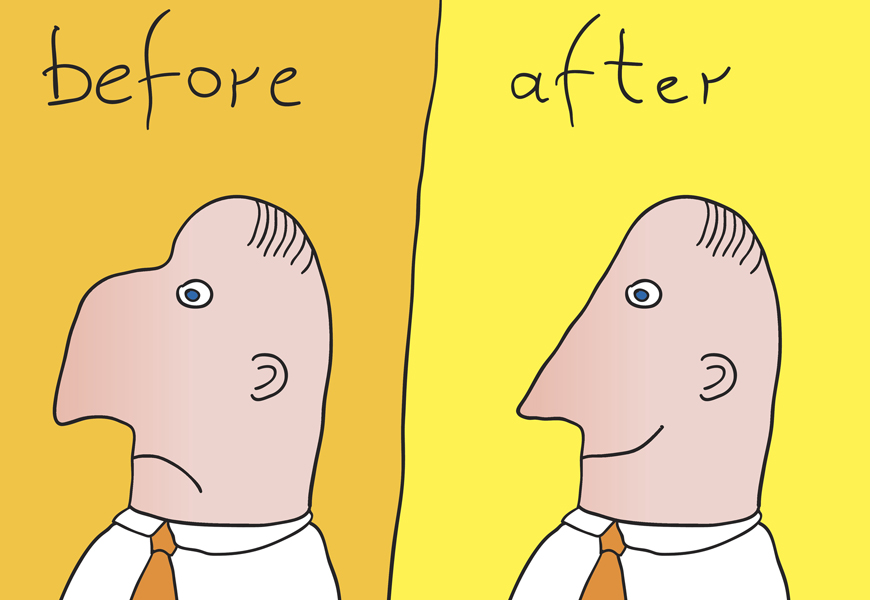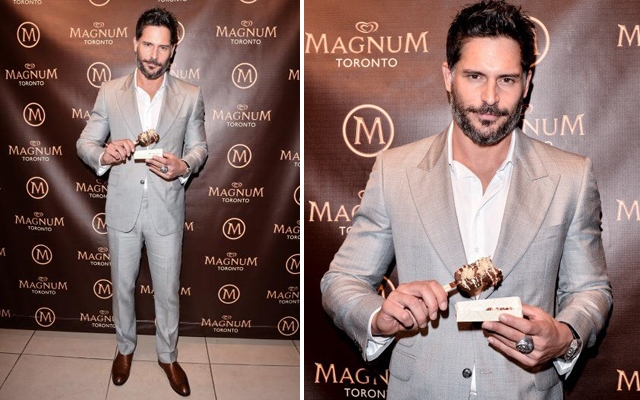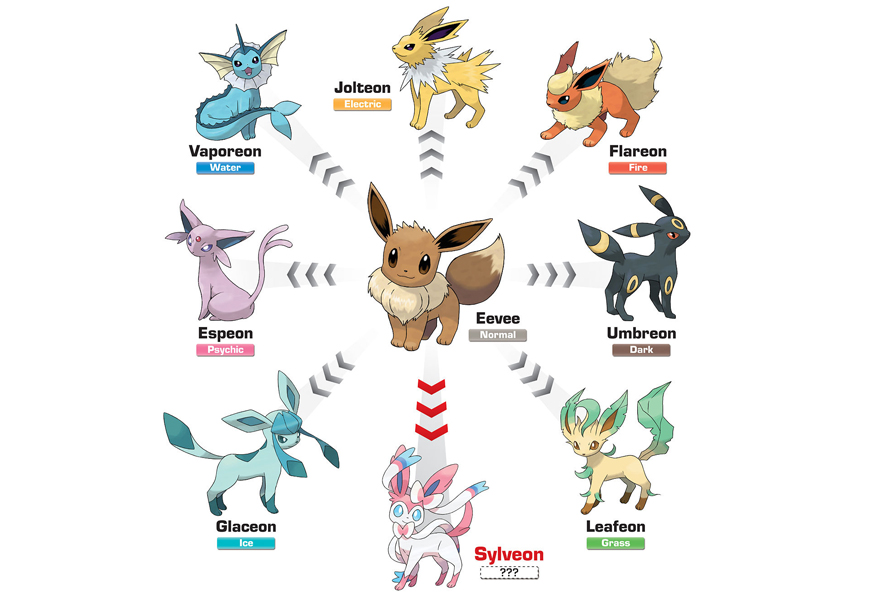The expression, beauty is as beauty does has transformed it’s meaning. No longer identified with or used as a statement to guilt women into behaving, it now translates into taking your good looks into your own hands or wallet, depending on what you have in mind. So if a nose job in on your personal agenda, you’re not alone. According to the American Society of Plastic Surgeons, more than 50,000 men had rhinoplasty in 2018, making it the number one plastic surgery procedure for men. Here is Dr. Phillip J. Miller’s, a plastic surgeon in New York City, easy-to-understand and use glossary of terms to help you best identify and articulate your nosy issues.
Deprojection
Do you have a nose that really juts out more than it should? This type of plastic surgery works by reducing the size of the nose, often going so far as to shave cartilage. Dr. Miller notes, “It’s one of our most popular procedure.”
Projection
The opposite of deprojection is called projection and as the name suggests, is designed to add a little more noticeability to your nose. “People who have very flat noses or flattened profiles are often the best candidates for this,” says Dr. Miller.
Counter-Rotation
If you have an upturned nose that throws off your appearance, you’re not alone. “People from all walks of life ask for a way to decrease the upward twist of the tip of their nose,” says Dr. Miller. Plastic surgeons created counter-rotation to help you get a more level appearance for the tip of your nose.
Rotation
While many people have the classic “ski jump” nose, others have one that droops downward at the tip. For people who want to get their nose turned a bit more upwards, a rotation would be the right kind of rhinoplasty to ask for. Both rotations and counter-rotations are often performed in tandem with other nose job techniques.
Bump Reduction
Do you have a large bump on the bridge of your nose that you want to get removed? “The reduction procedure uses a scalpel to shave of excess cartilage, giving your nose a smoother, straighter appearance,” says Dr. Miller.
Enhancement
Like most of the other procedures so far, bump reduction has an opposite counterpart that patients can use. The opposite of a bump reduction is called an enhancement, filling, or augmentation. With this procedure, your rhioplastician will use materials to fill in a “scoop” on your nose.
Raising/Lowering the Columella
The columella is the small portion of skin that’s often associated with septum piercings and it plays a huge factor in the overall appearance of your nose. “A droopy columella can give your nose a very exaggerated or misshapen appearance,” adds Dr. Miller. “An overly high columella can give your nose a slightly bulbous appearance.”Depending on what kind of look you’re going for, your plastic surgeon can raise or lower your columella. This is almost always done using surgery and careful sculpting.
Widening and Shortening
Having an overly broad or overly narrow nose is a complaint that many people have, which is why there are multiple procedures that cover this issue. These procedures are focused on the part of the nose that’s being altered. “The areas that you can get widened or shortened include the bridge of your nose, the dorsal plane, and the facial plane,” says Dr. Miller. Widening uses the addition of body-safe fillers or implants to help give a fuller appearance to your nose. Shortening on the other hand, typically involves careful sculpting of existing cartilage and skin.
Lengthening and Shortening
The length of your nose can also play a big role in your appearance and may even feel like it’s impossible to change. You can choose to add length or even shorten your nose. “These procedures are typically more complicated than others, which is why it’s strongly recommended that you choose a qualified surgeon for them,” warns Dr. Miller.
Filling
Collapsed noses can happen for a variety of reasons, including blunt trauma. A collapsed nose or “dented” nose can be corrected via filling. Depending on the extent of the damage, this can be accomplished via dermal filler injections or surgical intervention.
Straightening
This is a procedure that is used to straighten out noses that are twisted or crooked. “It’s a very common procedure for people who experienced blunt facial trauma, as well as people who have congenital defects,” says Dr. Miller.












